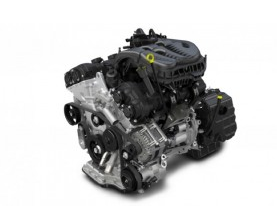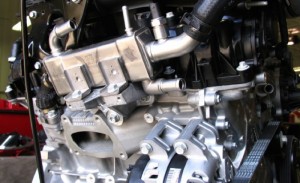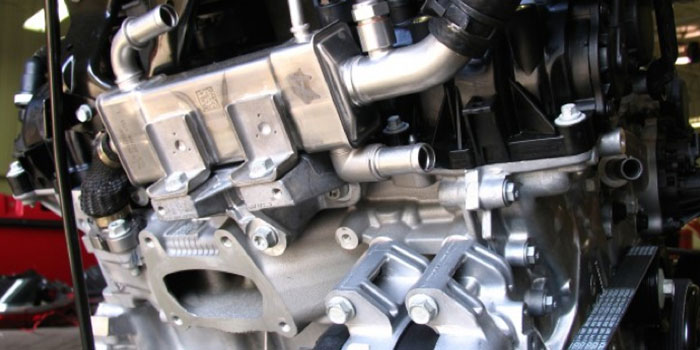 Chrysler’s 3.6-liter Pentastar V6 will basically be a new engine when it gets dropped into the 2016 Jeep Grand Cherokee, its first application in the FCA lineup.
Chrysler’s 3.6-liter Pentastar V6 will basically be a new engine when it gets dropped into the 2016 Jeep Grand Cherokee, its first application in the FCA lineup.
Bore, stroke, bore-center spacing, are all elements that will carry over, but the engineering team claims greater efficiency, improved torque characteristics, a slight horsepower increase and better NVH performance.
New components include cylinder heads with an 11.3:1 compression ratio (up from 10.2:1), new fuel injectors featuring eight holes each (twice the number in the previous iteration’s injectors), platinum-tipped spark plugs, new valve springs, low-tension piston rings, lightened crankshaft and crank pins, extensive friction reduction, and cooling of exhaust-gas recirculation.
However, the biggest improvement, according to FCA engineers, is a revision to the engine’s variable valve timing, giving intake-side valves a two-stage lift strategy—low lift for routine power demands, high lift when the driver needs it.
Operating range of the variable-valve-timing system has been increased from 50 to 70 degrees, improving operation of the automatic engine stop-start (ESS) function. From the current V6, the ESS system has been enhanced with a new high-speed starter motor in order to reduce cranking time and deliver quicker, smoother starts.
 The engine’s revisions don’t include direct fuel injection. FCA chose to upgrade the port-injection system, citing added cost and weight as tradeoffs that go with direct injection. According to FCA, the new engine will weigh 326 pounds in the Grand Cherokee, four pounds less than the current V6.
The engine’s revisions don’t include direct fuel injection. FCA chose to upgrade the port-injection system, citing added cost and weight as tradeoffs that go with direct injection. According to FCA, the new engine will weigh 326 pounds in the Grand Cherokee, four pounds less than the current V6.
The revised 3.6-liter V6 will start in the 2016 Grand Cherokee this fall, but FCA is still quiet on what other models in the lineup it could power. As of now, the 3.6-liter Pentastar currently appears in the Dodge Challenger, Charger, Grand Caravan, Journey, and Durango; the Chrysler 200, 300, and Town & Country; the Jeep Wrangler; and the Ram ProMaster, Ram Cargo Van, and Ram 1500 pickup.
Article courtesy Engine Builder.














